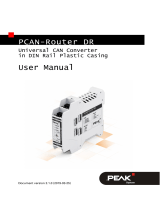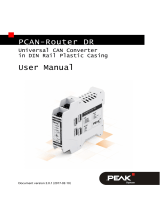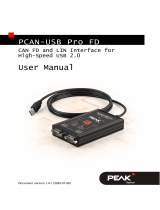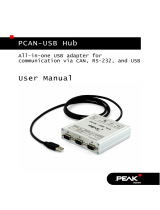
PCAN-RS-232 – User Manual
13
4 Software
This chapter covers the installation of the Yagarto GNU ARM tool-
chain and gives notes about the software library and the firmware
examples.
Software, source code, and additional information are included on
the supplied DVD in the following directory branch:
/Develop/Microcontroller hardware/PCAN-RS-232/
4.1 Installing the GNU ARM Toolchain
To compile the code examples and the custom firmware code under
Windows, install Yagarto on your computer. Yagarto is a collection
of tools to develop applications for ARM processors and micro-
controllers on Windows platforms. The collection includes the GNU
GCC compiler for C and C++, Make, and further tools. Further
information about Yagarto: www.yagarto.de
S
ystem requirement: Windows 10/8.1//7 (32/64-bit)
Do the following to install Yagarto:
1. From the directory branch on the provided DVD mentioned
above, change to the Compiler subdirectory.
The directory contains the two installation programs
yagarto-*.exe and yagarto-tools-*.exe.
2. Execute the first installation program and follow its
instructions.
If you don't want to use the default destination folder, make
sure that your customized path doesn't contain any spaces.
Otherwise compile operations will not work later.




























